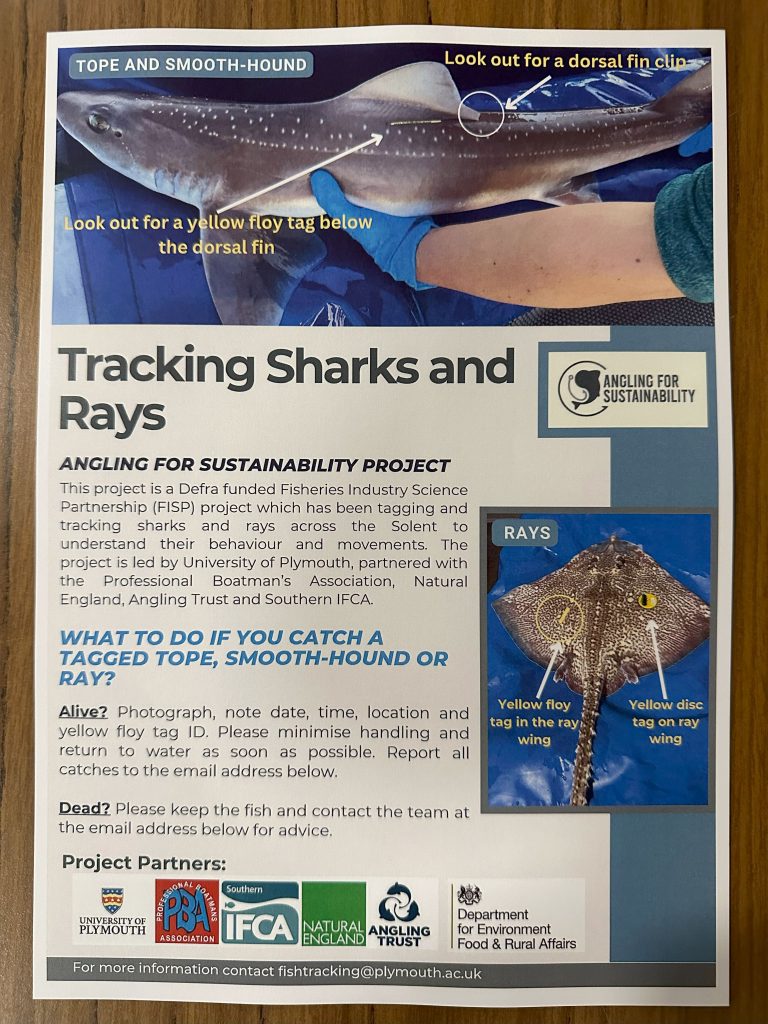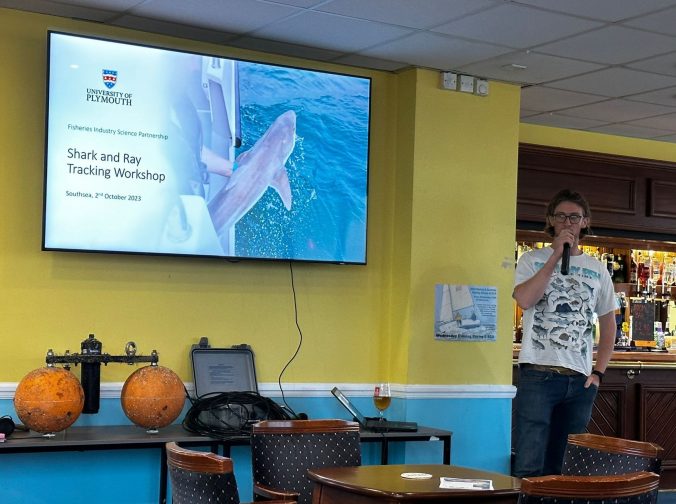On 2nd October we were treated to an excellent workshop presentation by Dr Peter Davies from the University of Plymouth, hosted by ECA. The purpose of the tagging project is to gather data on fish behaviour and movement in our local waters. Species included in the project are bream, tope, smoothhound and undulate rays, although data is also being gathered from other species such as bass and shad that have tagged by neighbouring projects and wandered into our patch.
Earlier tagging exercises relied on visible tags being recovered and this only showed where a fish’s journey started and ended. Advances in technology have now made it possible to gather much more information and at a more granular level. It even shows individual fish movements during a 24-hour cycle as well as much longer journeys such as to the Netherlands and the Channel Islands.
Fish are first caught by line and a transmitter is surgically embedded in their bodies. A visible tag is added so that if a fish is caught later on it can be released, or at least the transmitter can be recovered. The transmitter has a battery life of 10 years. The fish movement data is recorded by a network of devices laid on the seabed in key areas which are periodically raised to collect the data files for analysis.
The project is already gathering valuable information which can be used to make fact-based decisions on how to best protect fish stocks. This is surely better than the near guesswork which seems to have driven some of the decisions made previously. The data will give a better understanding of the use of breeding locations, how long fish stay in specific areas, how far to they range and how well they survive catch and release handling.
As part of this programme to communicate with local angling groups, Peter explained how to spot a tagged fish and what to do with it. Basically, this to keep a record of the tag details and then quickly put it back in the sea because it has a rather special mission. There is a copy of the information leaflet below for sharks and rays. Tagged bream are more difficult to spot because they have a small yellow stamp on their dorsal fin (pictured).
The workshop concluded with an extensive Q&A session which demonstrated the keen interest in this project. However one question which had been on everyone’s mind was finally raised. Where did Peter get that brilliant t-shirt? We all wanted one.
Program Partners include the Professional Boatman’s Association with our own Stuart Newall (Harvest Moon); Natural England; Angling Trust and Southern IFCA.
For further information or to report tagged fish, please contact fishtracking@plymouth.ac.uk


Leave a Reply
You must be logged in to post a comment.